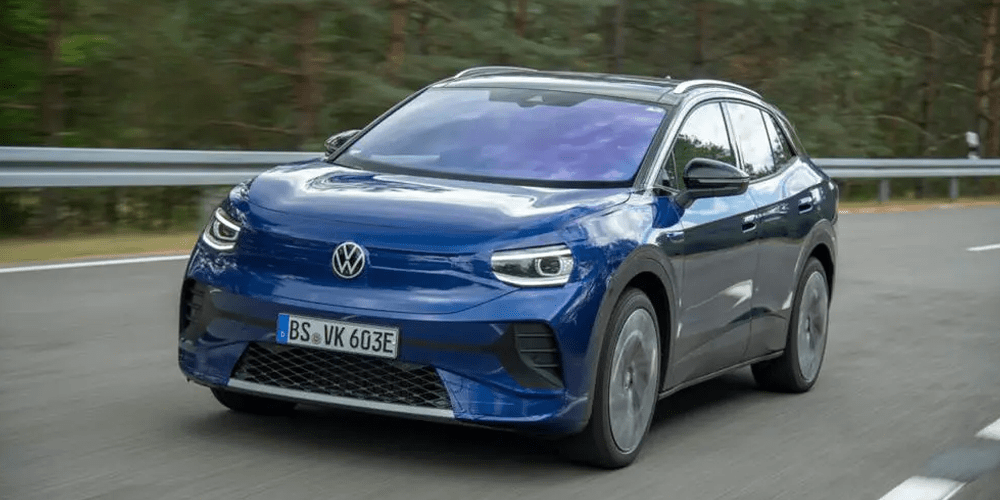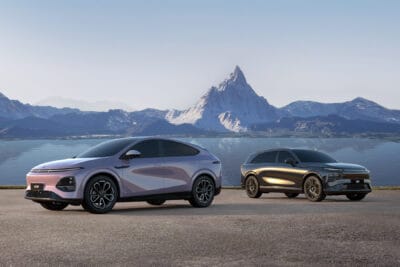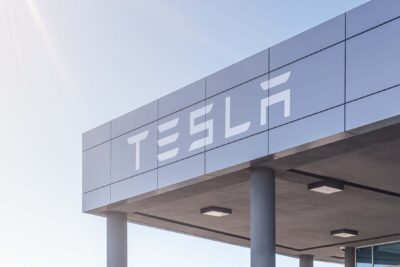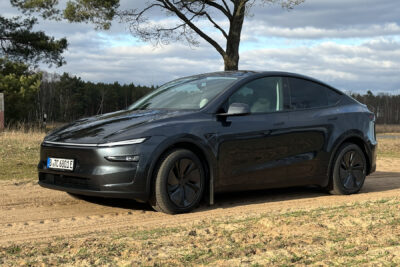VW brand boss Brandstätter: “The ID.4 will be a world-class car.”
Shortly before the world premiere of ID.4, VW brand boss Ralf Brandstätter and Volkswagens eMobility board member Thomas Ulbrich took questions from journalists. The managers mentioned some interesting figures about the e-SUV, on expected sales in particular.
With the ID.3, VW launched the first model of its “e-Offensive” a few days ago, and last Friday the first units were handed over to customers in Wolfsburg and Dresden. As brand boss Ralf Brandstätter confirmed in today’s Skype call, the 25,000 ID.3 of the 1st Edition are “in the markets and will be in the hands of customers in the next few days”.
But the ID.3 is virtually only the vanguard of a much more important model – because of its compact body shape alone, the ID.3 is seen as being limited globally and is not even offered in the USA. The ID.4, which will be presented next week, will soon change this “as the first 100 per cent electric SUV of our brand and designed as a world car,” says Brandstätter. The first ID.4 should be available to customers before the end of this year.
Thomas Ulbrich, the member of the eMobility Board of Management, added how important the ID.4 will become. VW plans to sell 1.5 million electric cars by 2025. Of these, 500,000 are to be ID.4 – in other words, the electric Tiguan is to account for a third of all MEB sales. “I think ID.4 will make it possible to bring e-mobility out of its niche,” says Ulbrich.
The e-SUV is currently being built in three plants, in addition to Zwickau, in Germany, the company has two plants in China, in Foshan and the completely newly built MEB plant in Anting. In 2022, production is scheduled to start at the Passat plant in Emden, and the first ID.4 for the local market will be manufactured at the US plant in Chattanooga.
Although the ID.4 is designed as a world car, it will be launched on the respective markets with some “country-specific adaptations”. “We’re well versed in this point from the world of combustion engines,” says Brandstätter with a smile. “However, the common ground is also present in all core markets with ID.4. Customers want strong technology, high range, rapid charging times.”
According to Brandstätter, he does not shy away from competing with Tesla’s Model Y as a compact e-SUV. “The ID.4 is shorter on the outside than a Model Y, but larger on the inside,” says the brand boss. “I think that we can score well with the car in the price segment we are aiming at”. But VW does not want to reveal the prices until next week at the world premiere and the subsequent opening of the order books.
Neither Brandstätter nor Ulbrich would say how high the subsidy margin will be. In the webcast, however, both managers pointed out several times that the ID.4 will enable important economies of scale.
ID.4 will be delivered with all functions from the start
The problem with the ID.3 – that the first vehicles are not delivered with the full functionality and had to be provided via software update – should not exist with the ID.4. “Of course, we have read the points of criticism, we are checking this very carefully”, says Ulbrich about the first ID.3 feedback. “With the software, we always said that it would be the first real update-capable car at VW. The first update will come before the end of the year.” At the state of this update, where, among other things, the remote area of the head-up display will be handed in later, should all also be available when the ID.4 are delivered.
Another point will not be so easy to update via software update: the battery voltage. The MEB is relying on the established system voltage of 400 volts, whereby competitor Hyundai is bringing an e-SUV with an 800-volt system into the volume segment next year with the Ioniq 5, while further 800-volt power supplies from Hyundai and Kia will follow thanks to the platform called E-GMP. “After long discussions, we decided on a 400-volt architecture for the initial design of the MEB,” says Ulbrich. “At present, we are rather thinking about how we can get more out of the 400-volt technology for the customer. A lot is possible in the next three to four years. Of course, a new approach is possible in future revisions, but “at the moment we see ourselves well-positioned”.
Volkswagen is not yet well-positioned in the small electric car segment. For the e-Up, VW recently had to impose an order freeze because the increased environmental bonus has led to a boom in orders. The delivery time has risen to 16 months, a critical figure: if the vehicle ordered today is not delivered until 2022, customers in Germany, for example, will no longer receive an environmental bonus, as this is limited until 31 December 2021 which makes a significant difference in the price. A successor based on MEB is not yet in sight. Recently, rumours began circulating that the small car presumably named ID.1 could be delayed from 2023 to 2025. But today Ulbrich promised that there will be new information about this “shortly”.
Reporting by Sebastian Schaal, in live call with Volkswagen.





0 Comments